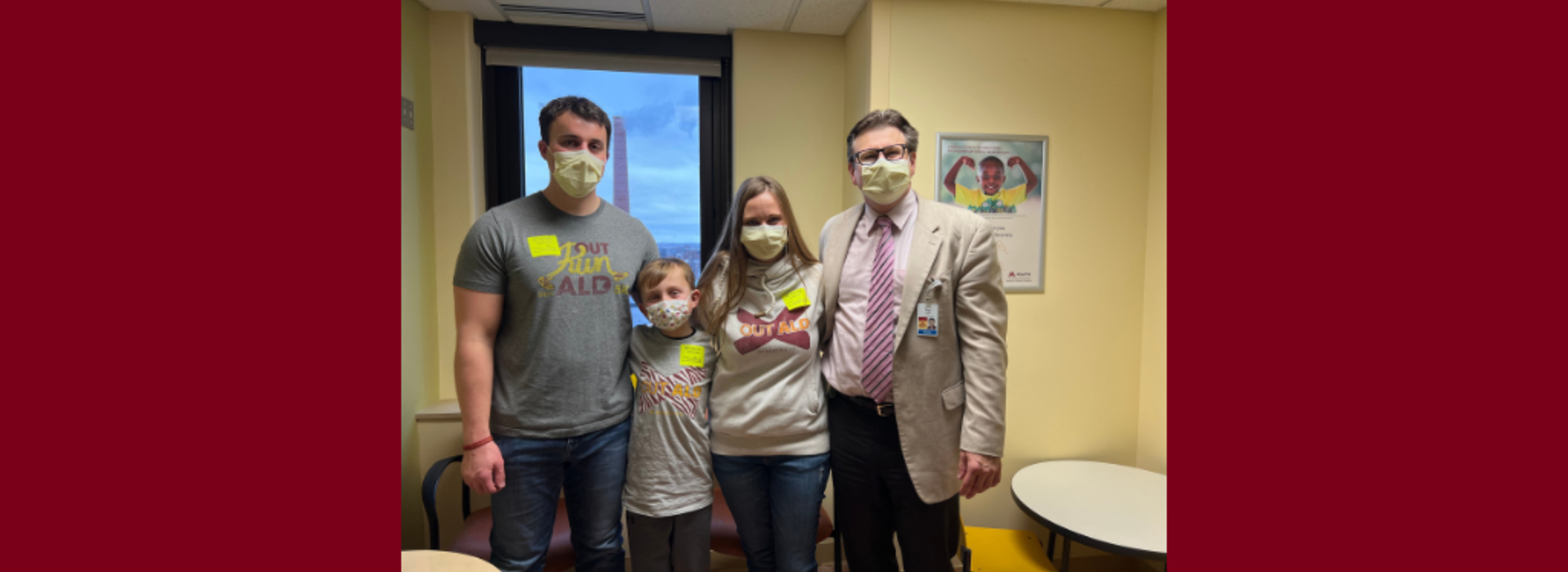
Dr. Troy Lund and the Groh Family’s Win Against ALD
If you were to meet nine-year-old Brock Groh, you couldn’t help but see him as a role model for exuding a positive spirit. Behind that spirit is the story of survival that Brock and his family went through.
Uncertain complications
Brock was diagnosed four years ago with adrenoleukodystrophy (ALD) and had developed cerebral ALD, a rare disease affecting about one in 17,000 children. ALD is a single gene defect on the X chromosome, meaning that boys are more affected than girls. The defect can be diagnosed through surveillance and monitoring the adrenal glands' function. ALD damages the adrenal glands and causes a disruption in fatty acid metabolism, and that process starts at birth. The adrenal glands do not tolerate high levels of fatty acids, and the glands can break down usually between the ages of three to seven.
This disease also affects the brain in four out of ten boys with ALD at a peak age range from four to seven years. When that process starts, it’s progressive and usually doesn’t stop. “It starts at a small part of the brain and then spreads significantly outward. It can lead to a lot of neurologic problems. Usually with vision, hearing and gait being affected, and ultimately death within the first decade,” says Dr. Troy Lund, MD, PhD, a pediatric blood and marrow transplant physician who led Brock’s care at the M Health Fairview Masonic Children’s Hospital Pediatric Specialty Care Journey Clinic. If caught early, like in Brock’s case, it can be stopped, and the boy can go on to live a long, happy, healthy life.
Now, over 30 states, including Minnesota, screen newborns for ALD. Brock beat incredible odds by persevering and thriving after a bone marrow transplant. “By going through the transplant process, we remove the old immune system and some damaged cells in the brain and then put in place a new immune system as well as some new cells in the brain. This is what stops cerebral ALD,” adds Dr. Lund.
Dr. Lund has a background in immunology and attributes his expertise to one of his mentors, Dr. Robert Good, who performed the world’s first successful bone marrow transplant at the M Health Fairview University of Minnesota Medical Center in 1968. “I was one of his last students, and that patient is still alive and well today,” recalls Dr. Lund. The University of Minnesota has been a global leader in bone marrow transplants ever since.
A huge milestone
This year marks Brock’s fourth transplant anniversary, and the Groh family couldn’t be more grateful. “I think we were pretty uncertain four years ago. And so this is what we hoped for. But we can’t really say that we thought we’d be here, so it’s amazing,” says Brock’s mom. “He lives a normal, 9-year-old boy's life. We do things that any other family gets to do. He gets to play soccer, hang out with his friends and play video games. That’s all we ever asked for,” adds Brock’s dad.
Dr. Lund agrees that Brock’s success is everyone’s success. He notes that they want all their patients to be like Brock and exemplify what’s happening at the M Health Fairview Masonic Children's Hospital. “In addition to being a physician in rare disease, I have a laboratory effort that works on rare disease models, but funding is always hard to come by. So Brock and his family helped establish X out ALD.”
The Groh family are advocates for ALD and started a non-profit organization, joined with five families from Minnesota, to support research of the disease at the University of Minnesota Leukodystrophy Center. To date, they have raised $500,000 for medical research to lead to more effective treatments and improve outcomes for children with ALD. “We couldn’t do the ALD research without this kind of support and X out ALD,” says Dr. Lund.
Every year, X out ALD leads a 5k to help raise awareness and funds to support the ALD research. This year’s fourth annual 5k will be on September 16, 2023. For more information and how to register, click here.
Brock’s wisdom
Brock and his family's life has drastically changed in the last four years. But with Brock’s positive spirit, he says, “Difficult roads often lead to beautiful destinations.”